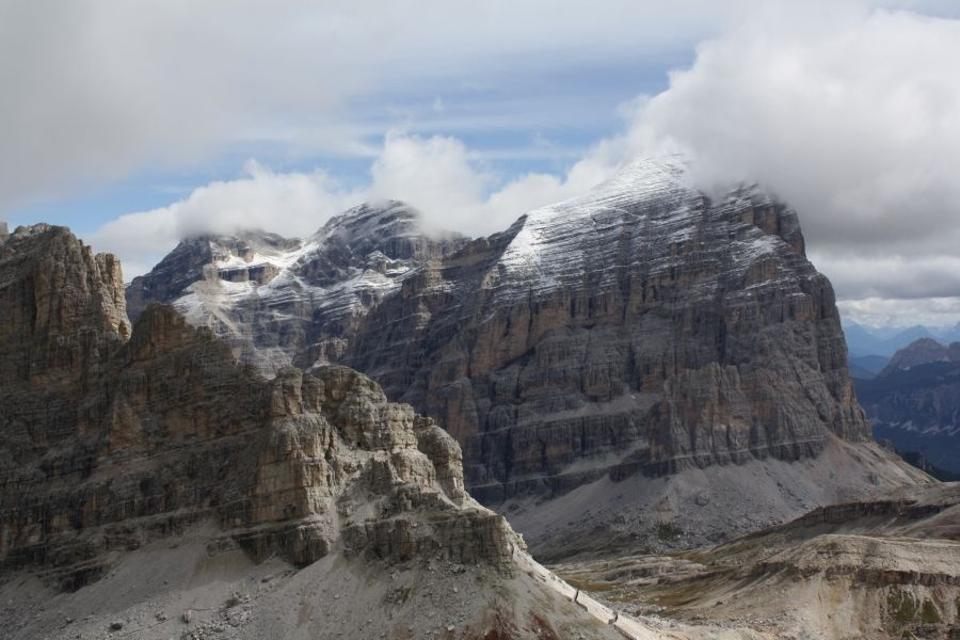The mineral Dolomite — a calcium-magnesium-carbonate — forms the dolostone landscape of the Dolomite mountains in Italy, the Niagara Escarpment between the U.S. and Canada, covers vast areas of the North American continent, the Iberian Peninsula, China, South Africa and is very abundant in marine sediments older than 100 million years with depositional thicknesses exceeding several hundred meters.
Yet scientists have failed to grow significant amounts of dolomite in the laboratory. Under Earth’s surface temperature and pressure conditions chemical effects hinder the incorporation of magnesium ions into the crystal structure, favoring the formation of pure calcium carbonate like calcite or aragonite. This finding aligns with geological observations indicating the scarcity of dolomite in contemporary sediments.
This distinctive geological phenomenon, coupled with unsuccessful synthesis attempts, has given rise to the “dolomite problem,” which has perplexed geologists for over two centuries.
Three primary hypotheses have been proposed regarding the mechanisms of dolomite genesis:
- Near-Surface Low-Temperature Genesis: A disordered calcite-dolomite mix forms initially in the pores of oceanic or surface sediments and later transforms into ordered dolomite under low-temperature (less than 60 degrees Celsius) conditions.
- Long-Term Burial: Calcium carbonate mineral precursors, such as calcite, undergo transformation into dolomite after being buried, facilitated by slowly rising temperatures (ranging between 60 to 100 degrees Celsius) underground.
- Hydrothermal Genesis: Magnesium-rich fluids heated up by magma intrusions and usually exceeding 100 degrees Celsius react with colder carbonate rocks forming dolostone.
In 2023, a study using a combination of computer simulations and laboratory tests showed how repeated deposition of magnesium and calcium layers followed by dissolution of parts of the crystal, removing so the surplus calcium, can create stable dolomite near ambient conditions.
A new study published by Chinese researchers adds further evidence to this theory by constraining the formation temperature of dolomite from field samples. The research looked at magnesium isotopes and fluid inclusions recovered from a drill core obtained by drilling through a thick dolostone succession deposited between 500 to 400 million years ago in the Tarim Basin in Northwestern China.
Thermodynamic theory predicts that the extent of isotopic fractionation of magnesium diminishes as temperature increases. At low temperatures, the most common magnesium in a dolomite crystal is isotope 26. At higher temperatures, two types of magnesium — isotope 26 and isotope 25 — are equally distributed in the crystal. In a similar way, the chemical composition of fluid inclusions — bubbles of liquids or gases trapped inside a solid crystal — reflect the temperature at the moment of their formation.
The measurements and calculations show that most dolomite formed at temperatures from 45 to 189 degrees Celsius. Dolomitization starts in a near-surface environment as the carbonate sediment reacts with seawater under ambient conditions. Under shallow burial conditions, residual seawater trapped in the sediment continues to form dolomite at medium-high temperatures. Very hot hydrothermal fluids only play a role at medium to deep burial conditions.
The important role of temperature in the dolomitization process also explains why dolomite is so rarely formed today. Most dolomite formed when temperatures across the world’s oceans were higher, providing ideal conditions for the accumulation of thick deposits. As Earth’s temperature dropped over the past 100 million years, dolomite was replaced by now common calcium minerals.
The study, “Using Mg isotopes to constrain the formation temperature of dolomite,” was published in the journal scientific reports.

